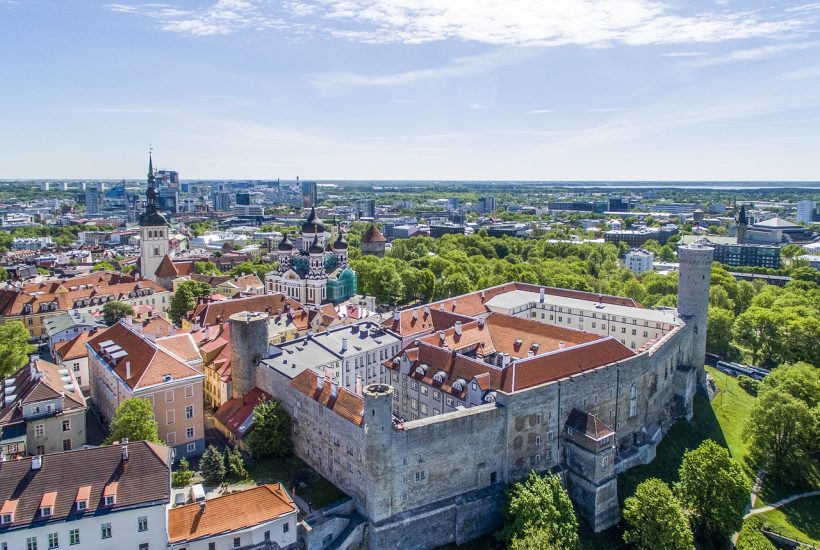Cannabis
Estonia to Allow Farmers to Grow Hemp with Higher THC Content
The new regulations will certainly make Estonia a more competitive market for the growing CBD industry. Some 6,800 hectares (16,000 acres) of hemp are currently cultivated in Estonia. Farmers who grow hemp with THC content within set limits are eligible for agricultural subsidies. The proposed updated regulations would allow the cultivation of three to five new varieties of hemp.

Estonian regulators plan to allow hemp farmers to grow plants with THC levels higher than the current 0.2%. By 2023, the limit will be at least 0.3%. This will bring the country up to the standards created by the EU last year.
This new policy, however, is not a step toward legalizing recreational cannabis- but rather is being advertised as a way to help the country’s cannabis growers, who have repeatedly complained about limited cultivation options under current regulations.
Read more on the subject with the Hemp.im mobile app. The application organizes what’s happening in the cannabis world to help you learn more about the stories that matter to you. Stay informed with the latest hemp news and get the important information in one application.
Currently, there are only two varieties of cannabis that can be legally grown in Estonia
The proposed updated regulations would allow the cultivation of three to five new varieties of hemp.
The new regulations will certainly make Estonia a more competitive market for the growing CBD industry. Some 6,800 hectares (16,000 acres) of hemp are currently cultivated in Estonia. Farmers who grow hemp with THC content within set limits are eligible for agricultural subsidies.
Standardization regulations in the hemp industry
Last year, EU regulations for THC concentration in industrial hemp were set at 0.3% THC in all member countries. Switzerland and the Czech Republic allow hemp varieties containing up to 1% THC. It is unlikely that the rest of Europe will follow Switzerland or the Czech Republic in this regard until marijuana is fully legalized for recreational use.
However, new regulations in Estonia move the country to the forefront of European countries that are on the verge of changing their cannabis policies to be in line with EU regulations rather than outdated national standards.
Currently, the lack of regulatory uniformity across EU countries is one of the biggest obstacles to a strong cannabis industry in Europe – of any kind.
According to Reno Paju, an official at the Ministry of Rural Affairs, the change will not have much impact on Estonian farmers, and he believes Finola will remain the most popular variety grown in Estonia.
Paju noted, however, that the relaxation will help prevent cases in which cannabis growers whose crops exceeded the permitted 0.2% THC level will be disqualified from receiving EU subsidies. There have only been a handful of such cases in Estonia, starting in 2017 and 2018, but it happens more often in Poland and throughout Southern Europe, where hemp cultivation is more popular and growing conditions are more conducive to producing more THC.
__
(Featured image by PuhkusEestis via Pixabay)
DISCLAIMER: This article was written by a third party contributor and does not reflect the opinion of Born2Invest, its management, staff or its associates. Please review our disclaimer for more information.
This article may include forward-looking statements. These forward-looking statements generally are identified by the words “believe,” “project,” “estimate,” “become,” “plan,” “will,” and similar expressions. These forward-looking statements involve known and unknown risks as well as uncertainties, including those discussed in the following cautionary statements and elsewhere in this article and on this site. Although the Company may believe that its expectations are based on reasonable assumptions, the actual results that the Company may achieve may differ materially from any forward-looking statements, which reflect the opinions of the management of the Company only as of the date hereof. Additionally, please make sure to read these important disclosures.
First published in Fakty Konopne, a third-party contributor translated and adapted the article from the original. In case of discrepancy, the original will prevail.
Although we made reasonable efforts to provide accurate translations, some parts may be incorrect. Born2Invest assumes no responsibility for errors, omissions or ambiguities in the translations provided on this website. Any person or entity relying on translated content does so at their own risk. Born2Invest is not responsible for losses caused by such reliance on the accuracy or reliability of translated information. If you wish to report an error or inaccuracy in the translation, we encourage you to contact us.

-

 Impact Investing2 days ago
Impact Investing2 days agoCOP30: Fragmented Climate Politics, Multi-Speed Transition, and Emerging Investment Opportunities
-

 Crowdfunding2 weeks ago
Crowdfunding2 weeks agoa2censo Expands Crowdfunding Access for SMEs and New Investors
-

 Markets1 week ago
Markets1 week agoRice Market Rebounds from Oversold Lows Amid Weak Demand
-

 Markets2 weeks ago
Markets2 weeks agoMixed Market Trends as Global Coffee Growing Conditions Improve
















